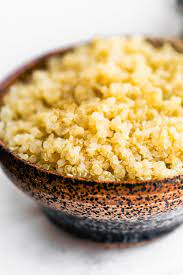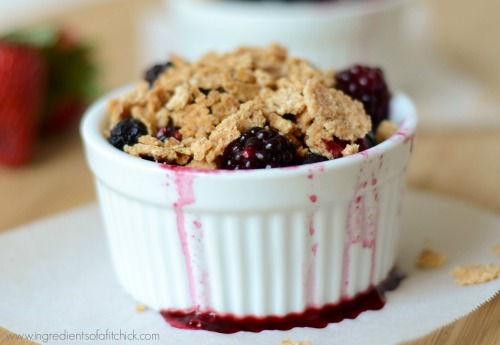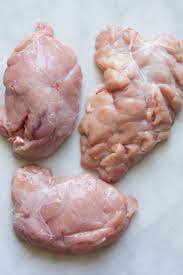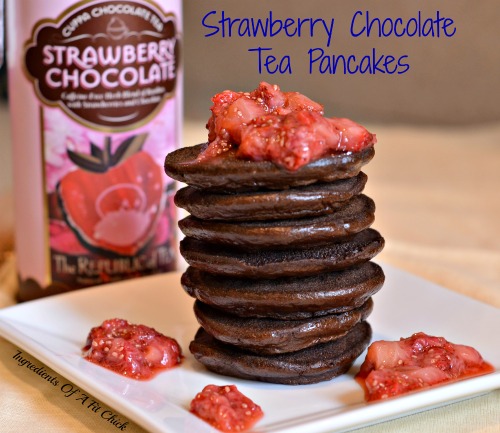Quinoa – Is it Really a Grain or Something Else? Exploring the True Nature of this Highly Popular Superfood
Quinoa, pronounced keen-wah, has gained massive popularity in recent years, and for good reason. This nutrient-dense pseudocereal is packed with protein, fiber, and essential vitamins and minerals. But is quinoa actually a grain? Many people refer to it as such, but the truth is a bit more complicated.
While quinoa is commonly categorized as a grain, it is technically not a member of the grass family, unlike wheat, rice, and corn. Quinoa belongs to a different botanical group known as Chenopodium, which also includes plants like spinach and beets. This means that quinoa is actually a seed, similar to other pseudocereals like amaranth and buckwheat.
Despite its classification, quinoa shares many similarities with grains, making it a popular alternative for those with gluten allergies or sensitivities. Its unique texture and nutty flavor make it a versatile ingredient that can be used in a variety of dishes, from salads and soups to desserts.
Quinoa: Origins and History
Quinoa, pronounced keen-wah, has a long and fascinating history that dates back to ancient civilizations in South America. It is believed to have been domesticated over 7,000 years ago in the Andean region of Peru and Bolivia. The indigenous people of the Andes, including the Incas, considered quinoa to be a sacred crop.
Quinoa played a significant role in the diet and culture of these ancient civilizations. It was considered a staple food and was used in religious ceremonies and rituals. Quinoa was prepared in various ways, including being cooked, fermented, and ground into flour.
During the Spanish conquest of South America in the 16th century, quinoa faced a decline in popularity. The Spanish colonizers viewed it as a crop of lesser value compared to traditional European grains, such as wheat and barley. Additionally, they suppressed the cultivation of quinoa as it was associated with indigenous cultures and beliefs.
However, despite the Spanish conquest, quinoa managed to survive in the Andean region, thanks to the resilience and dedication of local farmers. Over the centuries, it remained a staple food in the diet of Andean communities.
Rediscovery and Global Popularity
In the 20th century, quinoa experienced a resurgence in popularity due to its nutritional value and versatility. Its high protein content, along with essential amino acids and minerals, gained the attention of health-conscious individuals and researchers.
Quinoa started to attract attention in the international market as a healthy alternative to traditional grains. Its gluten-free nature also contributed to its popularity among those with gluten intolerances or allergies.
Today, quinoa is cultivated not only in Peru and Bolivia but also in other parts of the world, including the United States,Canada, and Europe. It has become a staple in many kitchens and is used in a variety of dishes, such as salads, stir-fries, and even desserts.
Quinoa as a Superfood
Quinoa is often referred to as a “superfood” due to its numerous health benefits. It is rich in fiber, antioxidants, and minerals like magnesium and iron. Additionally, it is a complete protein, containing all nine essential amino acids.
As quinoa continues to gain popularity, its sustainable cultivation and fair trade practices are also being highlighted. Quinoa production provides economic opportunities for small-scale farmers in developing countries, contributing to their livelihoods and local economies.
Overall, quinoa’s journey from its ancient origins to its modern-day popularity showcases its resilience and nutritional value. Whether enjoyed as a grain or not, quinoa has captured the hearts and taste buds of people around the world.
| Interesting Quinoa Facts |
|---|
| Quinoa is not technically a grain but a seed. |
| It comes in different colors, including white, red, and black. |
| Quinoa plants are resistant to drought and can grow in harsh environments. |
| Quinoa featured prominently in the diets of astronauts on space missions. |
Nutritional Properties of Quinoa
Quinoa is a highly nutritious grain-like seed that has gained popularity in recent years due to its numerous health benefits. It is rich in essential nutrients, making it an excellent addition to a healthy diet.
Protein
Quinoa is known for its high protein content, making it an excellent source of plant-based protein for vegetarians and vegans. It contains all nine essential amino acids, making it a complete protein source. A cup of cooked quinoa provides approximately 8 grams of protein, which is higher than most other grains.
Fiber
Quinoa is also a good source of dietary fiber. It contains both soluble and insoluble fibers, which can promote healthy digestion and help prevent constipation. The fiber content in quinoa can also help regulate blood sugar levels and promote a feeling of fullness, making it beneficial for weight management.
Vitamins and Minerals
Quinoa is packed with various vitamins and minerals. It is a good source of B vitamins, including folate, thiamine, riboflavin, and vitamin B6, which contribute to energy metabolism and support brain function. It also contains essential minerals such as magnesium, iron, zinc, and potassium, which are important for maintaining overall health and wellbeing.
Antioxidants
Quinoa is rich in antioxidants, including flavonoids and quercetin. These antioxidants help protect the body against damage from free radicals, which can contribute to chronic diseases such as heart disease and cancer. Consuming quinoa regularly can help support overall health and reduce the risk of these diseases.
In conclusion, quinoa is not only a versatile and delicious grain alternative, but it also offers a wide range of nutritional benefits. Its high protein content, fiber content, vitamins, minerals, and antioxidants make it an excellent choice for maintaining a healthy diet. Incorporating quinoa into your meals can be a great way to boost your nutrient intake and support overall health.
Cooking and Culinary Uses of Quinoa
Quinoa is a versatile grain that can be used in a variety of culinary dishes. Its mild, nutty flavor and unique texture make it a popular choice for both savory and sweet recipes.
Savory Dishes
- Quinoa can be served as a side dish, similar to rice or couscous. It can be cooked in water or broth and seasoned with herbs and spices to enhance its flavor.
- It can be used in salads, adding a nutritious and protein-packed element. Quinoa salads often include vegetables, herbs, and a dressing, making them a refreshing and healthy option.
- Quinoa can also be used as a stuffing for vegetables, such as peppers or tomatoes. The grain absorbs the flavors of the vegetables and creates a delicious and satisfying dish.
Sweet Treats
- Quinoa can be used to make porridge, similar to oatmeal. It can be cooked with milk or a dairy-free alternative, sweetened with honey or maple syrup, and topped with fruits and nuts.
- It can be used in baking to make cookies, muffins, and cakes. Quinoa flour can be used as a gluten-free alternative to wheat flour, adding a nutty flavor and a boost of protein.
- Quinoa can be used in desserts, such as puddings or parfaits. Its versatility allows it to be combined with various ingredients to create unique and delicious sweet treats.
Overall, quinoa is a grain that can be used in a wide range of cooking and culinary applications. Its nutritional benefits and versatility make it a great addition to any kitchen.
Health Benefits of Quinoa
Quinoa is a superfood with numerous health benefits.
1. Nutritional powerhouse: Quinoa is packed with essential nutrients such as protein, fiber, vitamins, and minerals. It is a complete protein source, containing all nine essential amino acids that the body needs.
2. Gluten-free: Quinoa is naturally gluten-free, making it a suitable alternative for those with gluten intolerance or Celiac disease. It is an excellent grain substitute for a gluten-free diet.
3. Rich in antioxidants: Quinoa contains antioxidants that help fight against free radicals and reduce the risk of chronic diseases, including heart disease, cancer, and inflammation.
4. Heart-healthy: Quinoa is low in cholesterol and sodium, making it beneficial for heart health. It also contains heart-healthy fats, such as omega-3 fatty acids, which help reduce the risk of heart disease.
5. Regulates blood sugar levels: The high fiber content in quinoa helps regulate blood sugar levels, making it a suitable choice for individuals with diabetes. Quinoa has a low glycemic index, which means it does not cause a rapid increase in blood sugar levels.
6. Boosts digestive health: Quinoa is rich in fiber, which aids in digestion and helps prevent constipation. It promotes the growth of beneficial gut bacteria, improving overall digestive health.
7. Weight management: Quinoa is a low-calorie food that can be an excellent addition to a weight loss diet. Its high fiber and protein content can increase feelings of fullness, reducing calorie intake.
8. Provides essential minerals: Quinoa is an excellent source of minerals such as magnesium, iron, zinc, and potassium. These minerals are essential for various bodily functions, including energy production, maintaining healthy bones, and regulating blood pressure.
With its many health benefits, adding quinoa to your diet can be a nutritious and delicious choice.
Quinoa: Gluten-Free and Suitable for Various Diets
Quinoa is a versatile and nutritious grain that is not only gluten-free but also suitable for various diets. Whether you follow a gluten-free diet due to celiac disease or gluten sensitivity, or a vegan or vegetarian diet, quinoa is an excellent choice for incorporating into your meals.
For those with celiac disease or gluten sensitivity, finding gluten-free grains can be a challenge. Quinoa, however, is a safe and delicious alternative. It is naturally free from gluten and does not trigger any adverse reactions in individuals who cannot tolerate gluten.
In addition to being gluten-free, quinoa is a great option for those following vegan or vegetarian diets. This grain is a complete protein, meaning it contains all nine essential amino acids that the body needs. It is particularly important for vegans and vegetarians to ensure they consume an adequate amount of protein, and quinoa can help meet their needs.
Furthermore, quinoa is rich in fiber and various vitamins and minerals, making it an excellent addition to any diet. It contains a good amount of iron, magnesium, phosphorus, and folate. These nutrients are essential for maintaining overall health and wellbeing.
Another benefit of quinoa is its versatility in cooking. It can be prepared in various ways, including as a side dish, in salads, as a stuffing, or even in desserts. Its mild nutty flavor and slightly chewy texture make it a great addition to both sweet and savory dishes.
In conclusion, quinoa is a gluten-free grain that is suitable for various diets, including gluten-free, vegan, and vegetarian diets. It provides a good source of protein, fiber, and essential nutrients, making it a healthy and delicious choice for any meal.
Quinoa: Sustainable Farming and Environmental Impact
Quinoa is not only a nutritious grain but it is also grown in a way that is sustainable and has a minimal environmental impact. Unlike many other crops, quinoa requires very little water to grow, making it a perfect choice especially in areas with limited water resources. This efficient water usage helps to conserve water, which is especially important in regions prone to drought.
Furthermore, quinoa farming practices promote biodiversity and protect the soil. Quinoa is typically grown using traditional agricultural methods that do not rely heavily on chemical fertilizers or pesticides. This reduces the amount of harmful chemicals that are released into the environment, preserving the quality of soil and water sources.
In addition, quinoa plants act as a natural carbon sink, absorbing carbon dioxide from the atmosphere. This helps to mitigate climate change and reduce greenhouse gas emissions. The cultivation of quinoa also contributes to the overall health of the ecosystem by providing habitats for various species of birds and insects.
Overall, quinoa cultivation is a sustainable farming practice that has a positive environmental impact. Its efficient water usage, minimal reliance on chemicals, and ability to absorb carbon dioxide make it an environmentally friendly choice for both farmers and consumers.
“FAQ:” Is quinoa a grain
What nutritional benefits can be found in quinoa, and how does it compare to other grains?
Quinoa offers various nutritional benefits. How does its nutritional profile compare to that of other grains?
Is quinoa a seed or a grain, and what distinguishes it from whole grains like wheat?
Quinoa is often considered a seed. How does it differ from whole grains like wheat, and what categorization is more accurate?
How does quinoa fit into a paleo diet, and what makes it a preferred choice for those following this dietary approach?
Quinoa is sometimes included in a paleo diet. What characteristics make it suitable for individuals adhering to this dietary approach?
Can you elaborate on the role that quinoa biodiversity plays, and how it contributes to the overall value of quinoa?
Quinoa biodiversity is significant. How does it play a role, and what does it add to the overall value of quinoa?
In what ways is quinoa considered a complete protein, and how does it fulfill this role in a diet?
Quinoa is often labeled as a complete protein. How does it meet the criteria for being considered complete, and in what ways is it beneficial in a diet?
Are there different varieties of quinoa, and how do they vary in terms of taste and nutritional content?
Quinoa comes in various varieties. How do these varieties differ in taste and nutritional content?
What vitamins and nutrients can be found in quinoa, and how do they contribute to its status as a nutrient-dense food?
Quinoa is loaded with vitamins and nutrients. Which specific ones contribute to its reputation as a nutrient-dense food?
How has quinoa gained popularity, and what factors contribute to the increasing demand for this ancient grain?
Quinoa has gained popularity in recent years. What factors have contributed to this surge in demand for the ancient grain?
Is quinoa gluten-free, and how does this attribute make it a suitable option for individuals with gluten sensitivities?
Quinoa is often noted as gluten-free. How does this attribute make it a suitable choice for those with gluten sensitivities?
Can you explain the role that quinoa plays in various dishes, such as quinoa pasta, and how it can be incorporated into daily meals?
Quinoa has versatile applications, including in dishes like quinoa pasta. How does it play a role in various culinary creations, and how can it be seamlessly incorporated into daily meals?
What are the nutrition facts associated with quinoa, and how does it stand out as a nutrient-rich seed?
Quinoa is often recognized for its nutritional content. How does it fare in terms of nutrition, and what makes it a nutrient-rich seed?
Why is quinoa not classified as a grain, and what characteristics differentiate it from traditional grains?
Quinoa is acknowledged as a seed rather than a grain. What specific characteristics set it apart from traditional grains?
How can one incorporate quinoa into their diet, and what benefits does quinoa consumption offer?
Incorporating quinoa into one’s diet can be beneficial. What are some ways to eat quinoa, and what advantages does it bring?
What is the distinction between white quinoa and black quinoa, and are there notable differences in their nutritional profiles?
Quinoa comes in various colors, including white and black. What distinguishes these varieties, and do they differ nutritionally?
Is quinoa recognized by the Whole Grains Council, and how does it align with their criteria for whole grains?
The Whole Grains Council acknowledges certain grains. Is quinoa among them, and how does it meet the criteria for whole grains?
Is quinoa gluten-free, and why is this attribute significant for individuals with gluten sensitivities?
Quinoa is often touted as gluten-free. How does this attribute make it a suitable choice for those with gluten sensitivities?
What significance does the “Year of Quinoa” hold, and how has it contributed to the recognition of quinoa as the “mother grain”?
The “Year of Quinoa” is notable. What significance does it carry, and how has it influenced the perception of quinoa as the “mother grain”?
How is quinoa considered both a whole grain and a complete protein, and what benefits does this dual classification offer?
Quinoa is often labeled both as a whole grain and a complete protein. How does it manage this dual classification, and what advantages does it bring?
How does red quinoa differ from traditional cereal grains, and what unique attributes does it bring to the table?
Red quinoa is distinct from cereal grains. What sets it apart, and what unique characteristics does it possess?
In terms of nutritional content, how does red quinoa compare to common cereal grains, and what benefits does it offer in a balanced diet?
Comparing red quinoa to cereal grains, what are the nutritional differences, and what advantages does red quinoa bring to a balanced diet?




